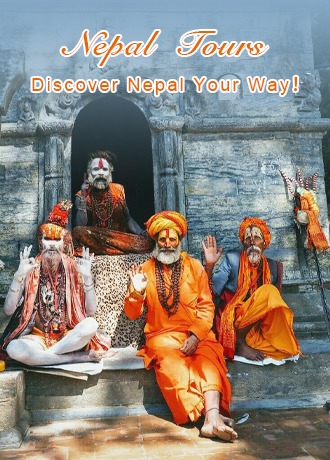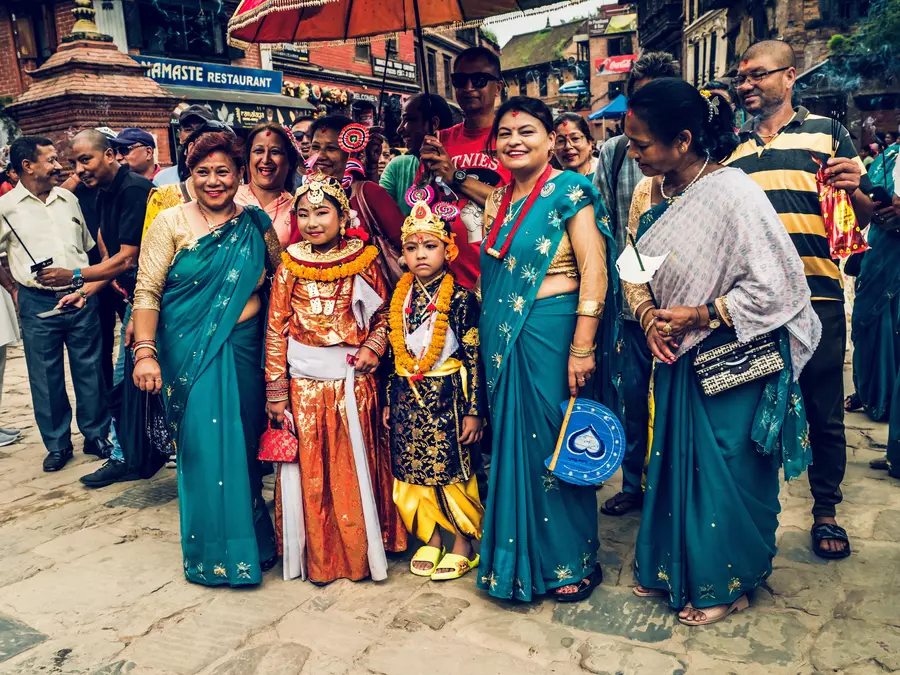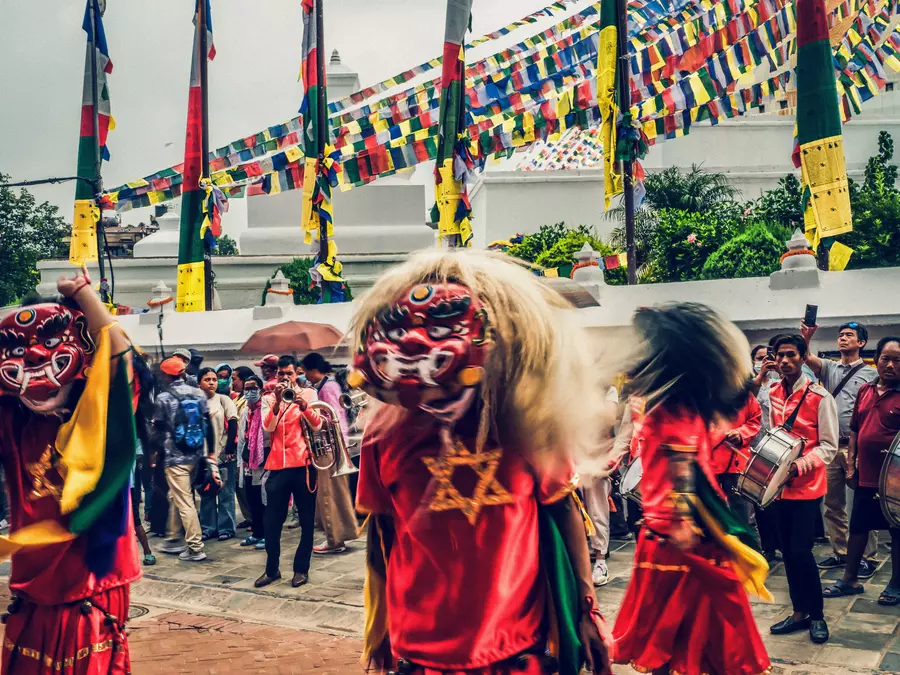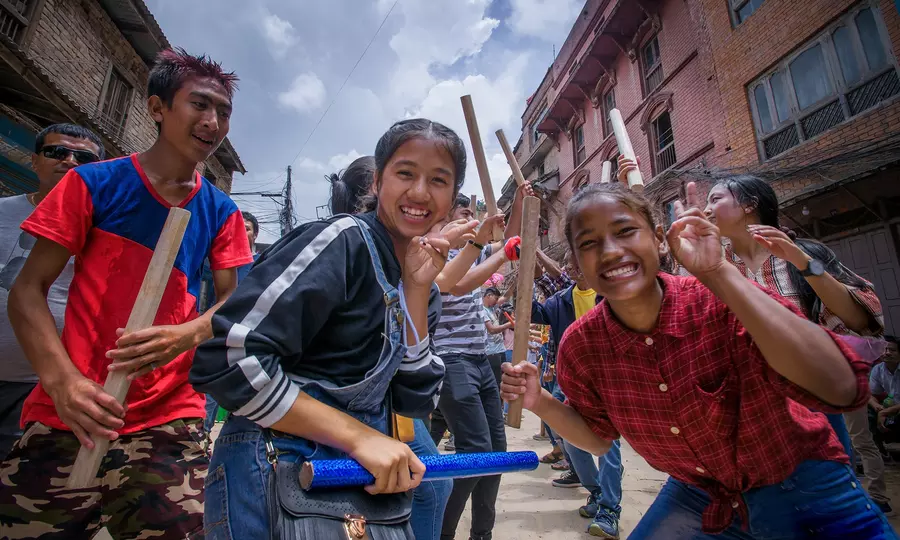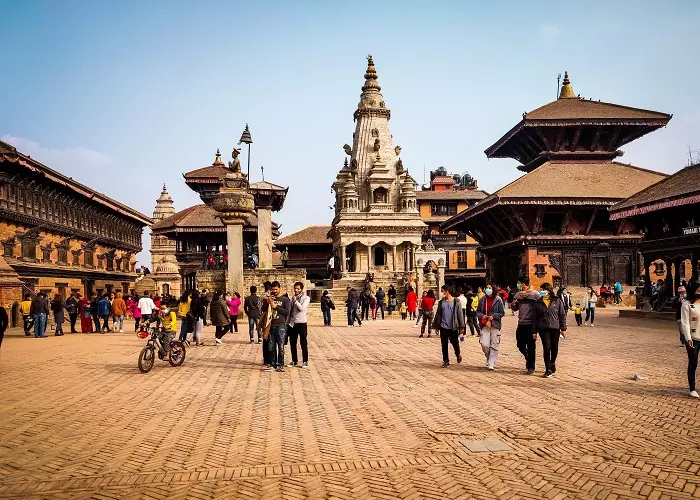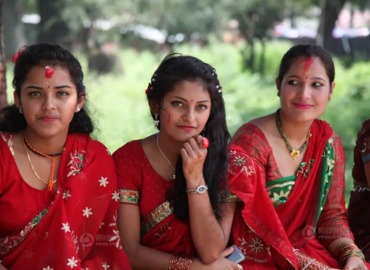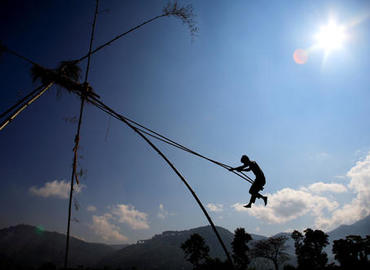Gai Jatra
- Jennie
- Last Updated : 11/05/2025
Gai Jatra, also known as the Festival of Cows, is one of Nepal’s most important traditional Hindu festivals. It is celebrated every year in mid-August (Nepali month of Bhadra), usually starting on the full moon night, with festivities lasting about eight days. In 2026, this festival falls on 29 August.
In the Newar language, this festival is called “Saaparu”, a way to remember and honor loved ones who passed away in the previous year. In Nepali, “Gai” means cow, and “Jatra” means festival or celebration. During Gai Jatra, families who have lost someone lead cows—or have children dress up as cows—in street processions to pray for the safe passage of the deceased’s soul to heaven.
Interestingly, because “Gai” is pronounced the same as the English word “Gay,” the festival has also become a celebration for third-gender and transgender communities, symbolizing self-expression, diversity, and inclusion.
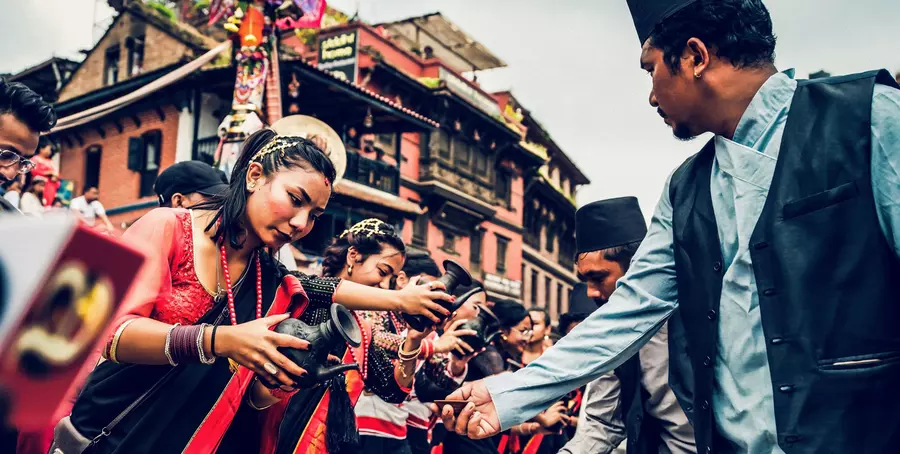
Origins of Gai Jatra
According to historical records, Gai Jatra originated in the mid-17th century in Kathmandu. King Pratap Malla was heartbroken over the death of his teenage son, Chakravartendra Malla. The queen was inconsolable, and even the construction of a large pond failed to lift her spirits.
To comfort her, the king devised a special event: all families in Kathmandu who had lost loved ones that year would lead a cow—or have children dressed as cows—through the streets to the royal palace, showing the queen that she was not alone in her grief.
During the first celebration, participants painted their faces with colorful designs and rejoiced with music and dance, symbolizing acceptance of life, death, and the cycle of reincarnation. The queen finally smiled, and this story became the origin of the Gai Jatra festival—a tradition to honor the dead and celebrate life.
Today, children who have lost a parent or close family member still visit Hanuman Dhoka Palace, where Newar priests perform prayers for the deceased. In the evening, comic and satirical performances at Hanuman Dhoka Dabali continue to reflect the festival’s theme of turning sorrow into laughter.
How Gai Jatra is Celebrated
Gai Jatra has been celebrated in Nepal for over 600 years. Newars believe that only by showing respect to sacred cows can souls be guided safely to heaven. In Hinduism, the mother cow is considered sacred, representing the goddess of fortune, Lakshmi, and guiding the departed toward the gates of rebirth.
The festival begins as early as 5 or 6 a.m., with the bustling sounds of drums, horns, and students’ “stick dance” chants filling the Kathmandu Valley. Women wear bright red saris, while homes are decorated with flowers and large copper basins filled with water and floating fragrant petals, creating a festive and sacred atmosphere. Families who lost loved ones during the past year often prepare tall, straw-like effigies adorned with umbrellas, straw horns, floral garlands, and the portraits of the deceased. The height and decoration of these effigies vary depending on the age of the departed and each family’s means.
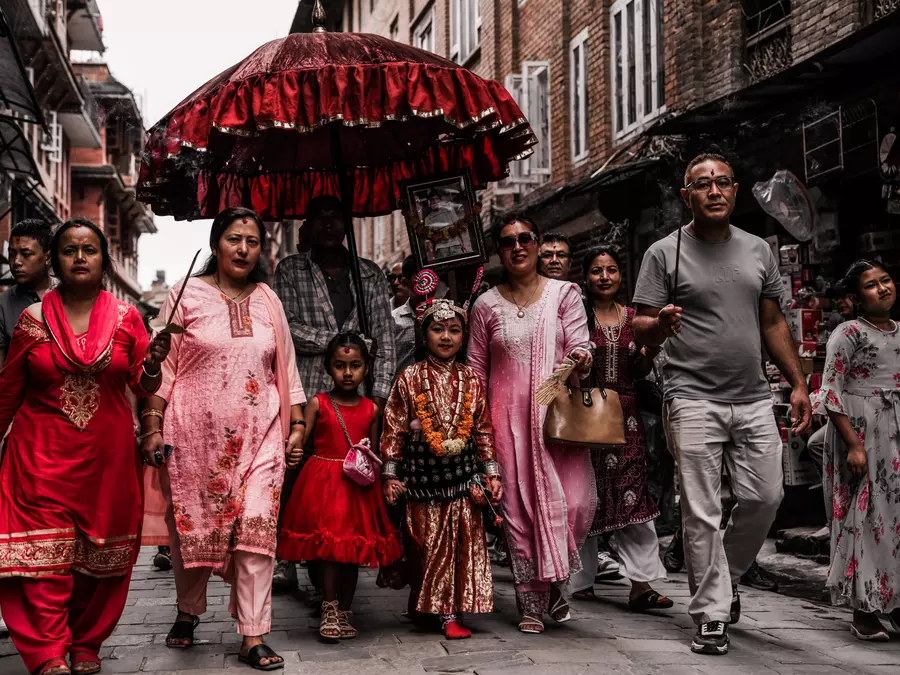
On the day of the procession, families carefully bathe and decorate the cows with tika (a symbolic blessing) and garlands. In households without cows, beautiful young boys are chosen to draw a beard, wear hats, as well as yellow or white outfits, dress up like a cow. The dressed "cow" took to the streets surrounded by people, with a colorful canopy above its head. During the procession, they deliberately walk past temples, statues and other sacred places. Families without deaths offer fruits, sweets, milk, and other symbolic gifts along the route.
Photos of the deceased are usually placed on the cows or straw decorations, symbolizing the sacred cow guiding the souls to heaven or the afterlife. According to ancient legend, on Gai Jatra, the King of Death examines the deeds of the departed in the underworld, while thousands of spirits await judgment. The path to the underworld is perilous, and souls must cross the fiery North Darlini River along the way. Most Newars believe that if a deceased loved one follows a sacred mother cow and holds onto its tail, their soul can safely traverse these dangers. The cow’s horns are said to help push open the gates of the underworld, allowing the soul to enter the hall of judgment. With the guidance of the sacred cow, deserving souls safely navigate the treacherous path of the departed.
During the procession, drums, horns, and singing fill the air. Nepalis believe that the loud music not only pleases the angry gods but also drives away evil spirits and calms the souls of those who suffered injustice in life, preventing them from disturbing the living.

Along the route, participants offer food, gifts, or small amounts of money to the cows or the boys dressed as cows, and some even feed milk to the sacred animals, believing that these offerings bring good luck. Women perform traditional stick dances, men may cross-dress for comic effect, and colorful masks add humor to the event, often attracting tourists to join. The city is immersed in laughter and blessings—a vibrant celebration where life itself is honored through music, dance, and communal joy.
Significance of Gai Jatra
The symbolic meaning of Gai Jatra lies in transforming grief into laughter and honoring life through the remembrance of death. The cow processions represent guiding the souls of the departed to the afterlife and expressing love and blessings for them. Through costumes, music, dance, and satirical performances, people release sorrow collectively, embracing the impermanence of life.
This tradition not only reflects the Newar community’s philosophical understanding of life and death cycles but also symbolizes social unity, compassion, and the renewal of spirit. Globally, traditions such as the Day of the Dead, Halloween, Obon, and Qingming Festival share a similar core message: honoring the dead while celebrating life.
Gai Jatra in Different Cities
Gai Jatra is a signature festival of the Newar community, with celebrations centered in the three historic cities of the Kathmandu Valley: Kathmandu, Patan, and Bhaktapur. It is now observed as an official holiday in Kathmandu Valley.
Bhaktapur hosts the most traditional and lively celebrations. With around 800 years of history, it is considered the birthplace of medieval Nepali architecture and art. During the festival, processions pass through Durbar Square in front of the royal palace, and historically, the Malla kings would count participants to estimate the year’s deaths. Today, the streets are filled with music, dance, and vibrant color, bringing the ancient city to life.
Kathmandu’s celebrations are often humorous and satirical. Besides honoring the dead, people dress in comic costumes or perform playful skits, sometimes poking fun at social issues or politicians. The city is filled with laughter and freedom of expression.
Patan emphasizes artistry and elegance, with graceful dances, traditional music, and elaborate costumes expressing love and remembrance for the departed, reflecting the warmth and refinement of Newar culture.
Across all cities, grief is transformed into joy, and remembrance becomes a celebration of life. Gai Jatra reminds people that death is not an end but a continuation in another form.
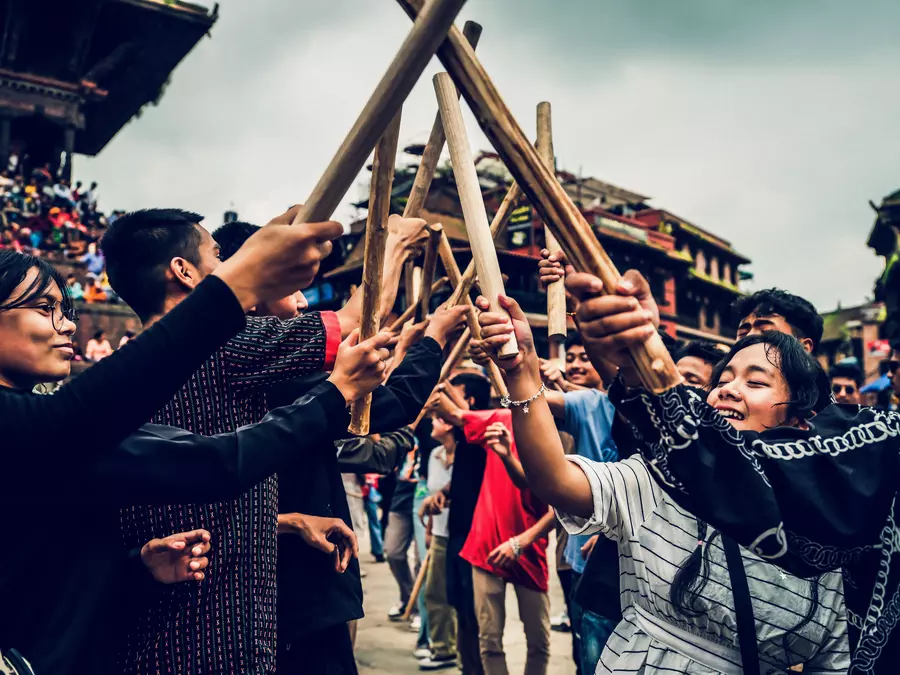
Modern Gai Jatra and Tourism
Today, Gai Jatra is not only a religious festival but also a cultural tourism highlight. Visitors can enjoy the processions, performances, and traditional music, and sample festive treats such as sweets, milk-based drinks, and local snacks.
Modern celebrations preserve traditional rituals while integrating new elements such as street art, photography, social media sharing, and cross-cultural experiences, allowing more people to learn about Newar culture and its philosophy of life and death.
Conclusion
Gai Jatra is more than just a festival—it is a celebration of life, remembrance, and community. Families leading sacred cows, children dressed as cows, and participants of all ages come together to transform grief into joy through music, dance, and laughter. This vibrant tradition reflects the Newar people’s cultural wisdom, showing that death is not an end but a continuation, and that honoring the departed can coexist with celebrating life. If you wish to experience Gai Jatra—or any other Nepali festival—up close, we can help you plan your visit, join the processions, and enjoy these unforgettable celebrations safely and respectfully. Contact us to be part of Nepal's rich cultural traditions firsthand.
Email response within 0.5~24 hours.


